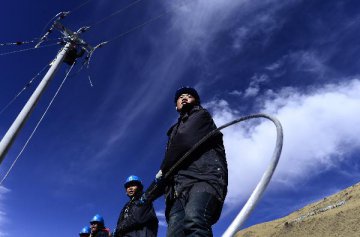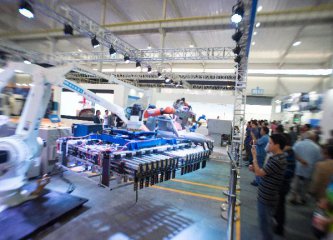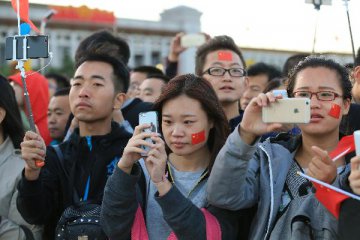
Up to December 2015, the central economic working conference will be held round the middle of this month as scheduled to determine the basic adjustment and control for the economy next year, and match the financial and monetary policies.
An anonymous insider closing to the decision makers told the journalist of National Business Daily that 2016 is a start of “13th Five-year Plan” period; China has entered into a key year of deep adjustment and transformation; many problems and disputes become obvious in 2015 with achievements in new industries and orientations; we are looking forward to the economic keynote next year.
The said insider also pointed out that supply side reform will become one of the key points of the said meeting. Senior management has mentioned this reform in many occasions in November.
Effort to intensify to stabilize growth next year
The pressure on stable growth is not easing in the four quarter this year, and growth rate of China’s GDP was 6.9 percent in the third quarter. Each party pays attention to whether such growth rate can keep over seven percent in the four quarter.
Liu Yuanchun, professor of Renmin University of China, told the journalist that 2015 is a year for new normal status of China’s macro economy to enter into a new stage but also a period full of difficulties; its structure begins to divide and vary.
Based on the latest report released by the Renmin University of China, it is expected that actual growth rate of China’s GDP for the whole year of 2015 will be 6.9 percent, down by 0.4 percentage points compared to 2014; such growth rate of 2016 will be 6.6 percent, further down by 0.3 percentage points compared to 2015.
This expectation is agreed by the market. The said insider stated that 2015 is a year with downtrend factors releasing, such as surplus capacities, clearing up of local debts and etc.; the economy is touching the bottom, and economic growth next year is likely to be at the bottom.
In the annual meeting of Tencent Finance for 2015, Wang Yiming, vice director of Development Research Center of the State Council, indicated that the investment of this year is constantly declining, especially the investment in real estate and manufacturing industries is closing to the bottom. Investment for capacities of supply side is effectively carried out and promoted, laying foundation for touching the bottom; the market expectation will change.
He also mentioned that new-type growth effectively hedges, new forces take up the spaces vacated by shrinking of traditional industries, and weakening of hedging traditional industries is beneficial to touch the bottom.
2016 is a start of “13th Five-year Plan” period. Chinese President Xi clearly pointed out that the target is to keep a medium and high-speed growth for the economy in the future five years, as we mainly consider doubling the GDP and per capita income of urban and rural residents up to 2020 when compared to 2010, which requires a certain growth speed. In terms of the target of doubling the GDP, the annual economic growth rate from 2016 to 2020 has to maintain over 6.5 percent.
Based on the goals and current situation, China does not have such big space for economic growth, just as Zhu Baoliang, director of Forecast Department under the National Information Center, said: can we realize the growth rate of 6.5 percent to 7 percent? We do not focus on the GDP, which does not mean that we do not highlight the GDP, we just regard the development as the first task.
The said insider believes that a keynote will not greatly change in successive five years that we pursue for stabilization with growth, and stable growth should be the priority in these economic targets.
Li Daokui, professor of Tsinghua University, also predicts that national economic policies will still focus on the stable growth and guarantee the growth in 2016; it is a severe challenge to implement the “13th Five-year Plan”, if the economic growth declines with such speed.
The focus: supply side reform
Since it was first introduced in the middle of Nov. 11 on the 11th Meeting of the Central Leading Group on Financial and Economic Affairs, “supply side reform” has become a policy focus. “While moderately expanding the total demand, we should strengthen structural reform on the supply side”.
The abovementioned person who declined to be identified believed that new concept of macroeconomic adjustment behind supply side reform may be discussed at China’s highest level of economic conference.
Report of Renmin University of China analyzed that continuous dip of China’s macro economy requires repositioning of macroeconomic policies in 2016. It is a good opportunity to reexamine and evaluate current reform at the time of dip. The decision makers may find new directions when eradicating the old policies and fostering the new policies, and sort out reform plans according to new directions to find practical routes for the reform.
The report suggested that on the one hand, supply side adjustment policies and demand management policies should be applied to block various strengthening mechanisms that result in endogenous decline and prevent overall behavioral variation of microeconomic entities; on the other hand, while reinforcing macro adjustment, the government should keep an eye on various “bubbles” that may cause recession.
Economic reform is also the focus of decision making. President Xi Jinping pointed out on the 11th Meeting of the Central Leading Group on Financial and Economic Affairs that the advancement of economic structural reform should aim to tackle prominent problems and key issues, and he also named several problems, such as excessive productive capacity, high enterprise cost and massive housing stock.
In November, Premier Li Keqiang emphasized again in the article titled "China's economic blueprint" that China has combined multiple policy tools to form two economic growth engines: first, “massive entrepreneurship and innovation by all”, which is an important part of structural reform; second, increasing the supply of public products and public services, which may stimulate domestic demand as well as improve people’s livelihood.
The weakening effect of “troika” that drives economic growth is another reason why supply side reform is dragged to the spotlight. Wang Yiming said the marginal effect of investment is decreasing apparently, and the root is that the structure of the supply side cannot accommodate changes on the demand side when the market economy is undergoing transformation. “The demand for housing and transportation is saturated gradually, and diversified, high-end and service oriented demand is forming. But the supply structure is old fashioned and cannot be adjusted easily”.
“In my understanding, supply side reform is aimed at the active flow of productive factors, from low efficient sectors to high efficient sectors and from oversupply sectors to sectors in short supply”. Wang Yiming suggested the formulation of an effective exit mechanism for excessive productive capacity, especially for those “zombie companies”. “‘Zombie companies’ occupy considerable resources, labor force, land and even bank loans. Under the circumstances, to get the productive factors and resources flowed again and reallocated is an important link”.
In terms of fiscal and monetary policy mix for the next year, most economists still inclined to the previous combination of “loose fiscal policy and stable monetary policy”. President Xi Jinping also indicated in the aforesaid meeting that China will maintain stable macro policy, adhere to positive fiscal policy and stable monetary policy, to build stable macroeconomic environment for economic structural reform.
Translated by Jelly Yi and Adam Zhang
























Latest comments